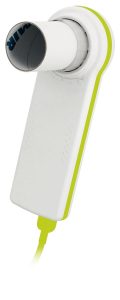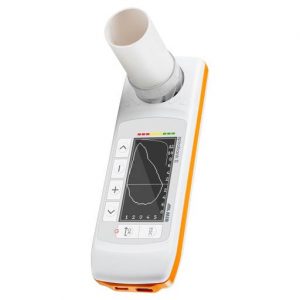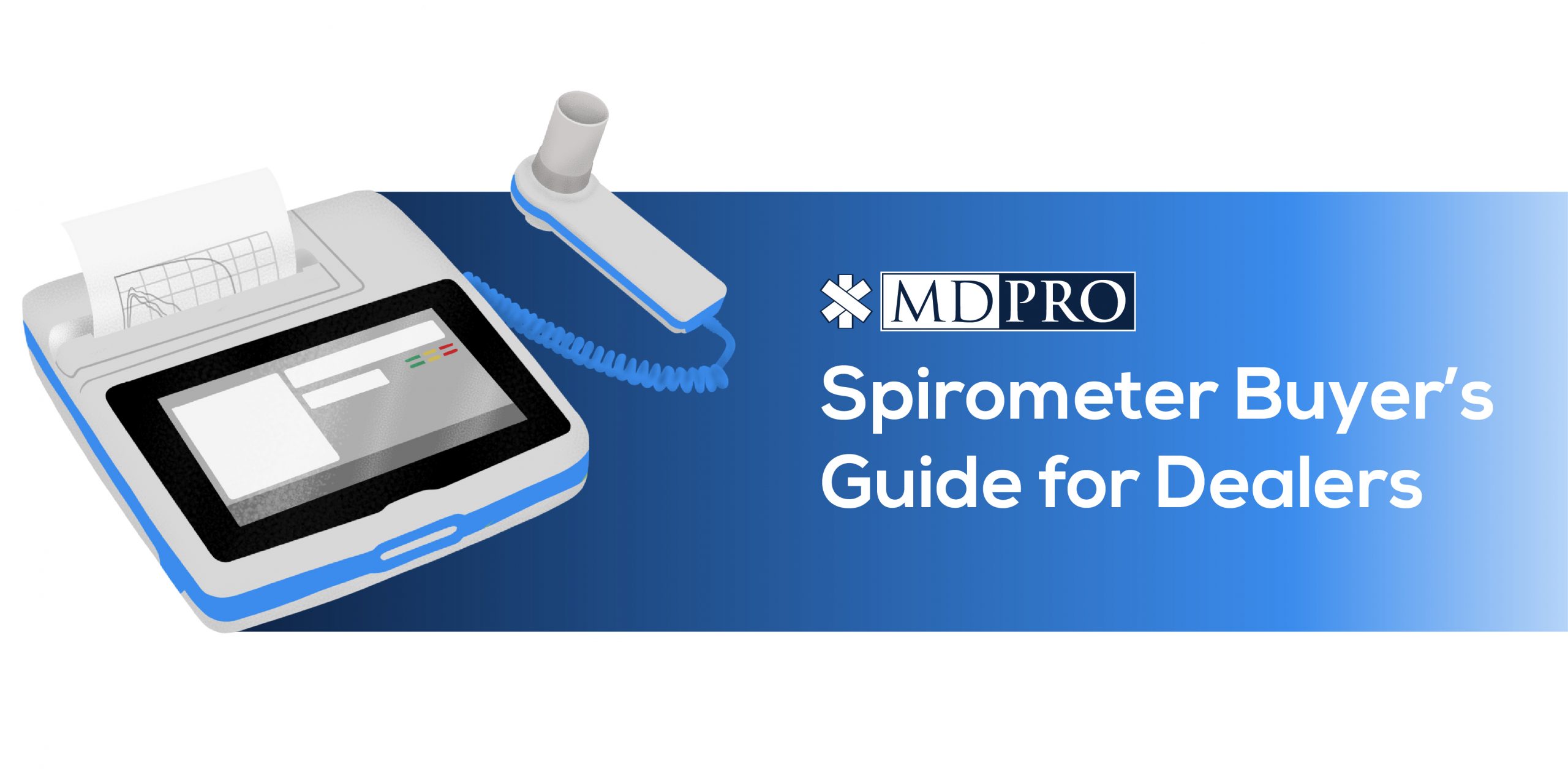Understanding the different types of spirometers and spirometer accessories on the market is extremely important when becoming a spirometer dealer. Our Spirometer Buyer’s Guide for Dealers will walk you through the basics of these devices and the things you should consider before becoming a dealer.
What are Spirometers?
Clinicians use spirometers to diagnose respiratory diseases such as COPD, asthma or pulmonary fibrosis. These devices give clinicians an idea of their patient’s lung mechanics by measuring exhaled volumes of air over time.
These devices can be especially helpful in checking whether or not the patient’s treatment is effective.
Before You Buy
Understand the Different Types of Spirometers
PC Spirometers
PC spirometers plug directly into the clinician’s desktop or laptop PC. These devices come equipped with their own software in order to turn your device into a working spirometer.

Hand-Held spirometers
These devices are pocket-sized, and usually have a real-time waveform or digital display and PC synchronization capabilities. Hand-held spirometers are battery-operated and are easy to use inside or outside of the office.

Tabletop Spirometers
The tabletop spirometer is one of the most popular spirometer options. These spirometers will often feature a waveform and numerical display, PDF export options, and a built-in thermal printer.

Standard vs Advanced Spirometers
Standard
Standard Parameters
FVC, FEV1, FEV1%, PEF, FEF25–75, FET, Extrap. Volume, Lung Age, VC, IVC, IC, ERV
Advanced
Advanced Parameters
FVC, FEV1, FEV1/FVC, FEV1/VC, PEF, FEF25, FEF50, FEF75, FEF25–75, FEF75–85, Lung Age, Extrap. Volume, FET, Time to PEF, FEV0.5, FEV0.5/FVC, FEV0.75, FEV0.75/FVC, FEV2, FEV2/FVC, FEV3, FEV3/FVC, FEV6, FEV1/FEV6, FIVC, FIV1, FIV1/FIVC, PIF, FIF25, FIF50, FIF75, FEF50/FIF50, VC, IVC, IC, ERV, IRV, Rf, VE, VT, tI, tE, VT/tI, tE/tTOT, MVV (measured), MVV (calculated)
Advanced Configurations
Pulse Oximeter
Advanced Features
Bluetooth/Wireless Connectivity
Determine What Facility Type You Usually Sell To
Costs, spirometer types, and accessories will vary greatly depending on the type of facility you are selling to. For example, a larger facility may require a more portable spirometer so that it can be easily carried between rooms. Other facilities that rely on electronic medical record systems might prefer a PC-based spirometer for easy uploads. Knowing the type of facility you are targeting will help you choose the right monitor and maximize your return on investment.
Consider the Accessories your Customers Might Need
Mouthpieces
There are many different types of mouthpieces for your customer to choose from based on the spirometer brand they are purchasing. Understanding that different spirometer brands will offer different types of mouthpieces will help you recommend the right one to your customer.
Common Types of Mouthpieces
Disposable mouthpieces
Reusable mouthpieces
Nose Clips
The nose clip is another helpful add-on for spirometer purchases. They are often disposable and help ensure that no air is escaping the nose during the test.
Filters and Turbines
While some mouthpieces are all-in-one and include filters or turbines, other spirometer brands only offer them as an additional add-on.
Thermal Paper
If a customer buys a tabletop spirometer, they will most likely want a supply of thermal paper. These papers come in many sizes, depending on the spirometer.
Feeling Ready to Become a Dealer?
We hope our “Spirometer Buyer’s Guide for Dealers” has helped prepare your or your next spirometer purchase! Here at MDPRO, we offer a large selection of MIR and QRS spirometers and accessories. Call our team at 888-602-PROS or reach out to us via our contact us form for a quote!






